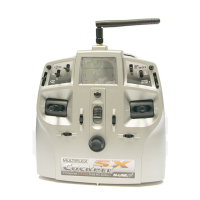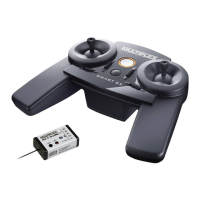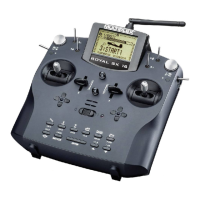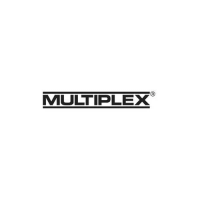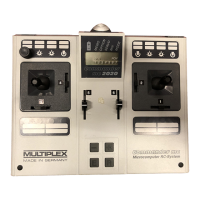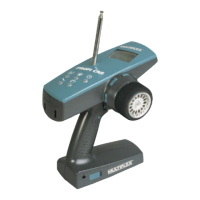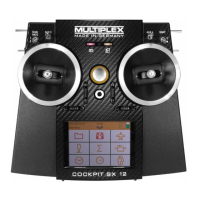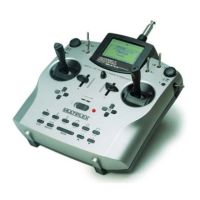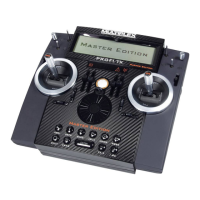15
1.5. Other instructions and checks
· Build your model carefully, this applies above all to any nec-
essary repairs to your model. You are responsible for your
own actions.
· Attach the servos and aileron pushrods in such a way so
that the ailerons move smoothly and do not jam when fully
deected.
· Adjust the output arms and pushrods accordingly. Keep the
play as small as possible. This is the only way to ensure that
there is no undue strain placed on the servo and therefore
to make sure that its performance is fully utilized. These
measures ensure the servo has a maximized lifespan and
guarantee the highest degree of safety.
· Protect the receiver, batteries, servos and other RC com-
ponents effectively from vibrations. Follow the instructions
given in these operating instructions. This especially involves
correctly balancing propellers and rotors. Replace damaged
parts or parts which are not running true in the motor.
· Do not stretch or kink the cable and protect it from rotating
parts.
· Avoid using unnecessarily long or superuous servo ex-
tension leads and ensure a sufcient cable cross section
(voltage loss). A benchmark of at least 0.24 mm
2
is recom-
mended. For digital servos in the 79xx, 8xxx or 9xxx model
ranges, we would even recommend 0.33 mm
2
.
· Avoid interference pulses caused by static charges and
strong electric or electromagnetic elds by taking appropri-
ate interference suppression measures (e.g. by suppressing
the electric motor with a suitable capacitor) and ensure suf-
cient distance is maintained between the RC equipment,
receiver aerial, wiring and batteries.
· Ensure sufcient distance is maintained between wires car-
rying high currents (e.g. electric motor) and the RC equip-
ment. The wiring between the brushless e-motors and their
actuators in particular must be kept as short as possible
(benchmark max. 10 to 15 cm).
· Carefully check all functions and familiarize yourself with the
operation of the transmitter before launching the model.
· Check ease of motion and absence of play of the ailerons
and rotor linkages.
· Ensure stability and awless condition of pushrods, rotor
linkages, hinges etc.
· Check model for breakages, aws and shear edges on any
of the RC components or on the motor.
· Ensure awless condition and contact safety of wires and
plug connections.
· Check the condition of the power supply and its wiring in-
cluding switch harnesses by inspecting the exterior of the
cells. This also involves employing a charging procedure
which is appropriate for the battery type with a suitable char-
ger and regularly carrying out maintenance on the battery.
2. Specication
Channel number 7 - Cockpit SX 7
9 - Cockpit SX 9
Model memory 200
Transmission mode -15...+55 °C
Übertragungsart M-LINK
Aerial IOAT
Frequency 2400...2483,5 MHz
Power supply LiFe battery 3,3V/4000 mAh
Total weight approx. 850 g
Dimensions approx. 190 x 210 x 60 mm
